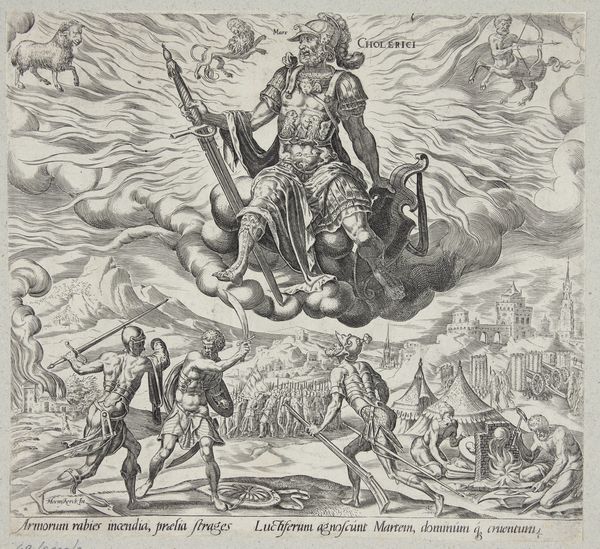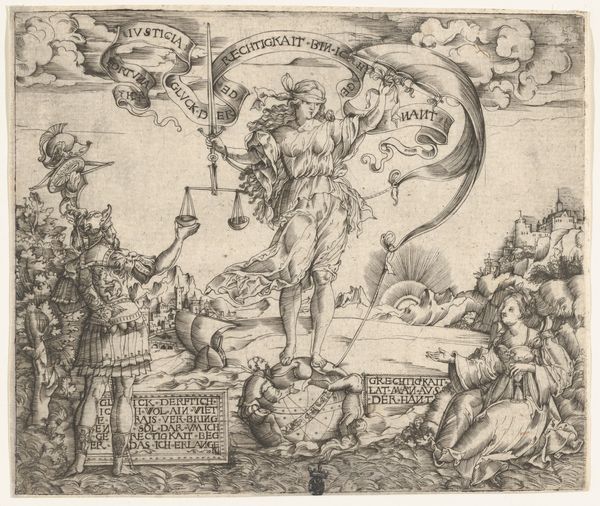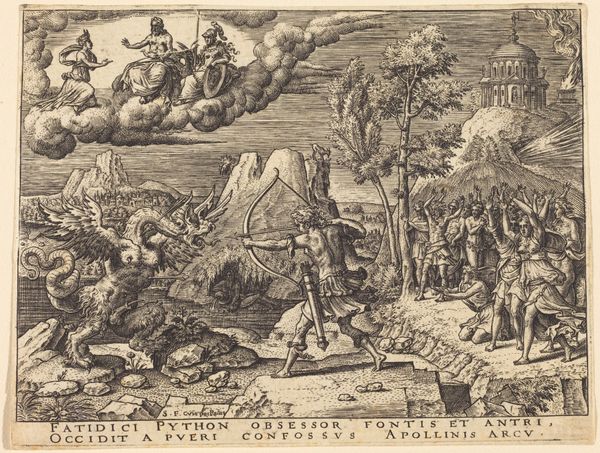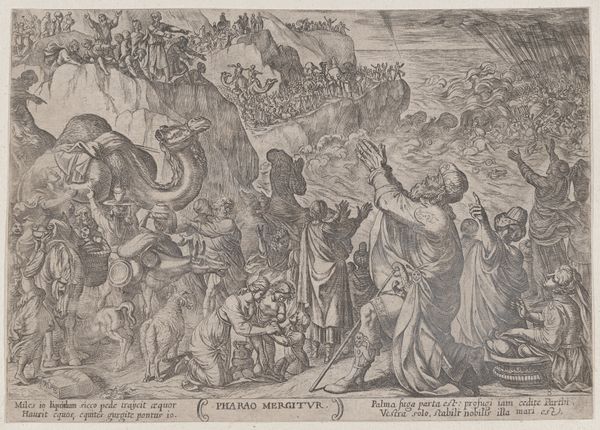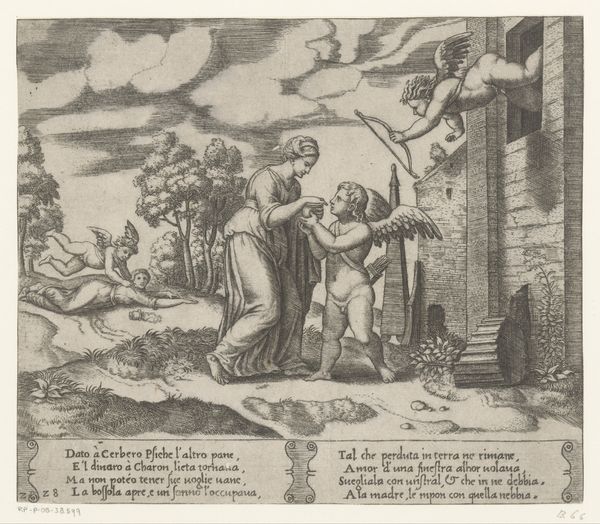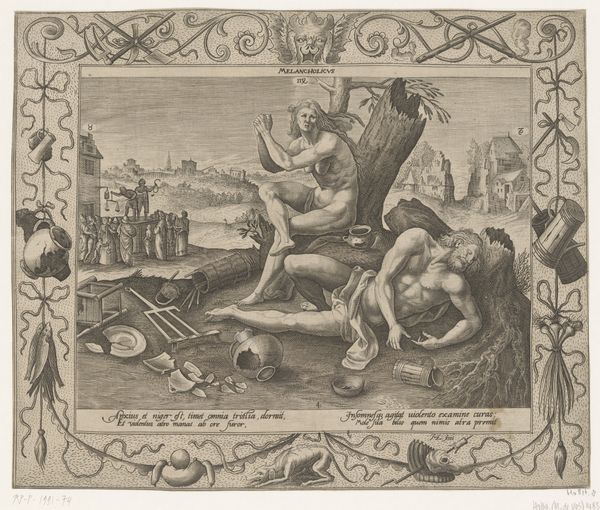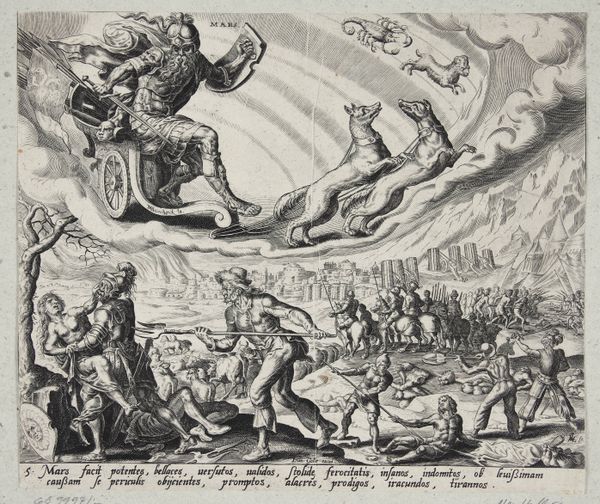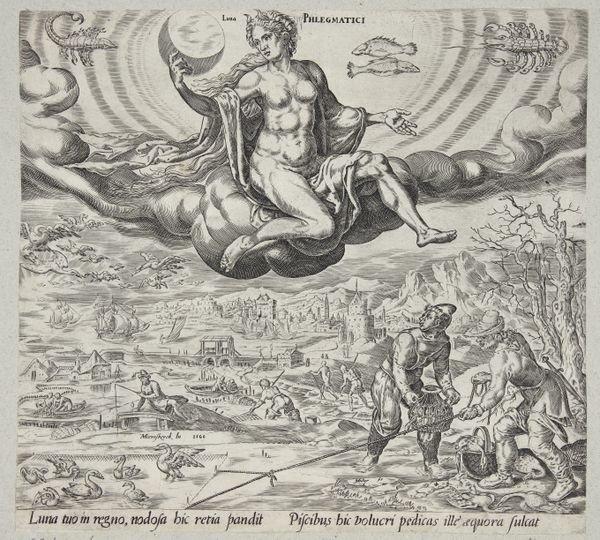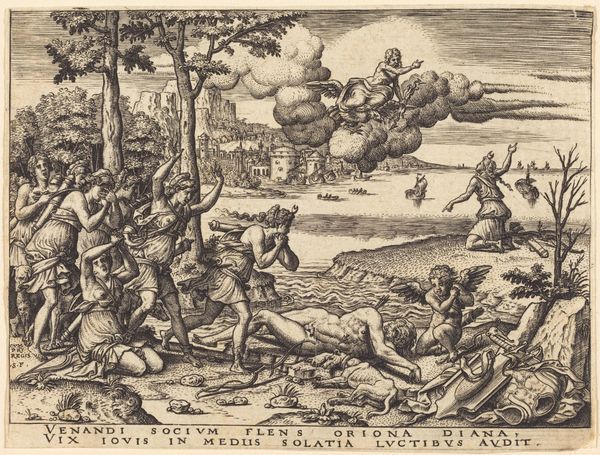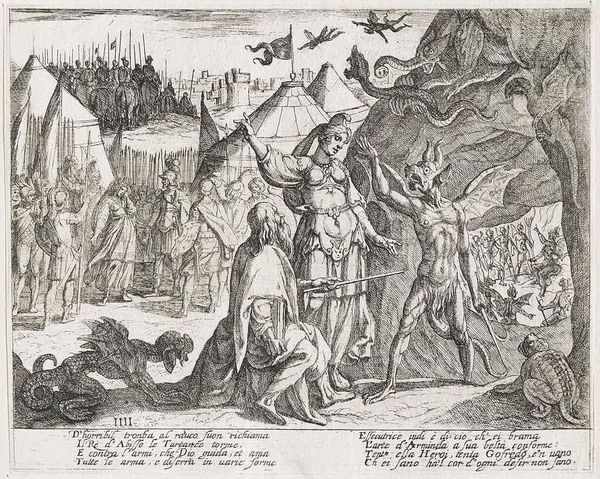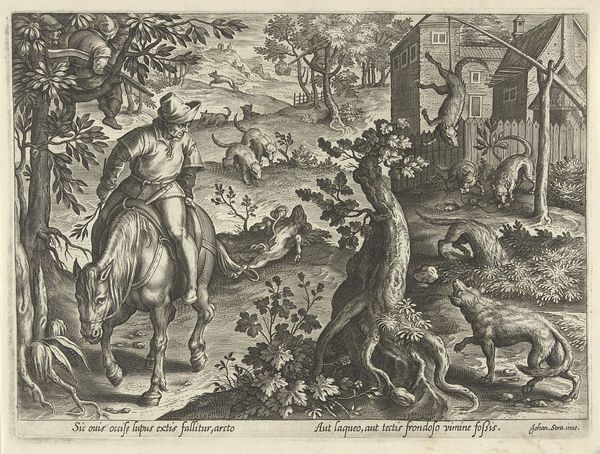
print, engraving
#
allegory
#
pen drawing
# print
#
landscape
#
figuration
#
form
#
ink line art
#
line
#
history-painting
#
northern-renaissance
#
engraving
Dimensions: height 215 mm, width 249 mm
Copyright: Rijks Museum: Open Domain
Curator: So, this engraving is titled "Lente," made by Philips Galle in 1563. It’s currently at the Rijksmuseum. What's your initial impression? Editor: It's quite dense, isn’t it? The allegorical figure dominates the foreground, but there's so much detail packed into the background – different scenes, figures, landscapes…It all feels very industrious. What do you see in it? Curator: Well, from a materialist perspective, I’m immediately drawn to the process of its creation. Consider the labour involved in producing this intricate engraving. The artist, Galle, would have had to be skilled in the application of tools and techniques specific to the medium to transfer his complex vision. Think about the economy that supported this production, who purchased these prints and for what purpose? The very act of replication suggests it was designed for wider circulation. What sort of value was given to the print as a product in comparison to the painting medium? Editor: So, you’re focusing less on the "high art" aspect and more on the labor and its accessibility? Curator: Precisely! Galle’s Lente challenges traditional hierarchies by emphasizing the skilled hand of the artist-engraver and by examining the modes of production and distribution of art. Did these prints serve the function of other “higher art” pieces? How do you think the allegorical nature and its theme plays into that accessibility of understanding this piece? Editor: It really changes the way I see it, shifting the focus from just the image itself to its life as a commodity and a testament to skill and labour of Galle. Curator: Exactly! It makes us think about the relationship between art, labor, and the broader socio-economic context. Now, think of similar things in current printmaking processes, are they the same, how have they changed? Editor: I see your point. It’s not just about what is depicted but how it was made, and who had access to it. Thanks! Curator: Indeed, understanding the conditions of production provides us with a new lens through which to view this historical object.
Comments
No comments
Be the first to comment and join the conversation on the ultimate creative platform.
